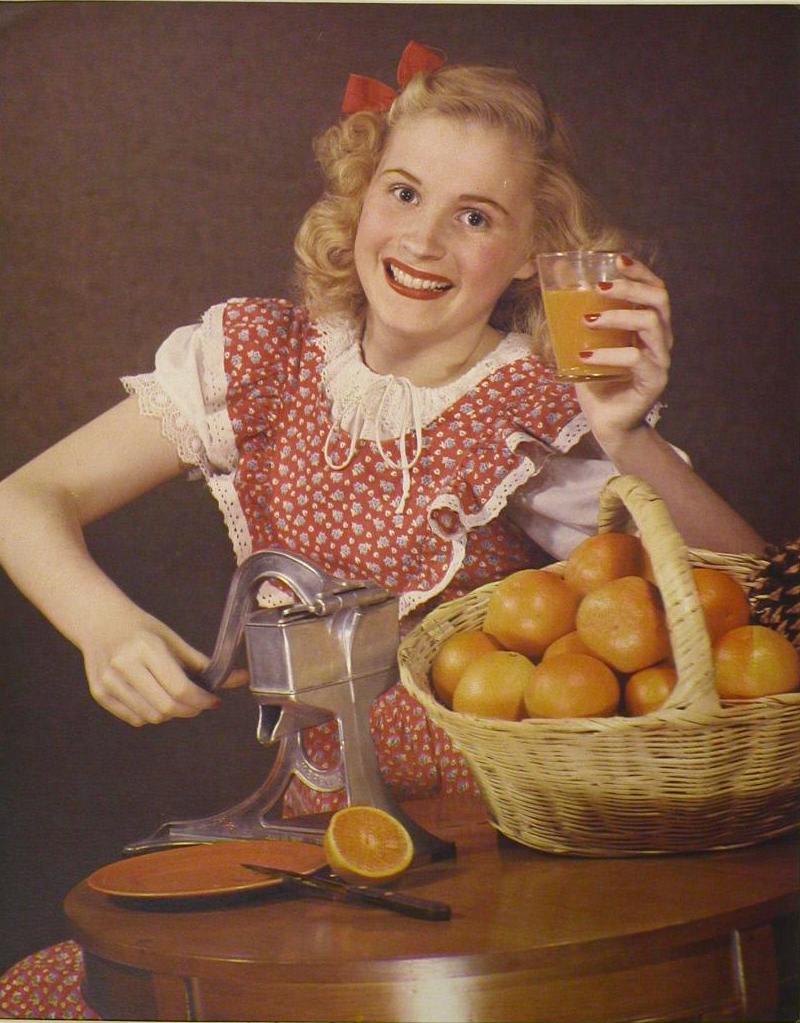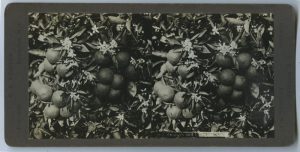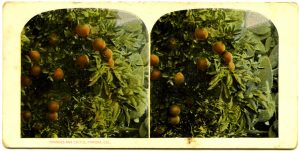Put together the puzzle on this page to create George Faitzer-Feroff’s Girl with Oranges! Read below to learn about the difficulty in depicting southern California’s oranges in full color leading up to images like this. This photograph is currently on view in the Color Shift exhibition which you can visit virtually here!
For decades, photographic emulsions were orthochromatic, which meant they were sensitive to blue and green light, but far less sensitive to red light. As a result, black-and-white negatives interpreted blue objects as lighter in color than they actually were, and red objects darker. Photographers working in southern California struggled to make oranges look appealing; with orthochromatic film they often resembled dark cannonballs!
Some photographers compensated by altering the color through hand-tinting or translating the image into photomechanical formats.
Panchromatic film, which reads all colors with equal sensitivity, debuted in 1905 and was widely available by the 1910s. Beginning in the 1920s, photographers put it to work with tri-color separation negatives, which offered a more lifelike and natural rendition of even the most previously-problematic colors.
Girl with Oranges is likely an advertising image made for an orange juice or citrus company and depicts oranges in a far more pleasing manner than previous monochromatic and artificially colored photographs! Complete the puzzle to see the full color image!
Tips: Don’t see the puzzle below? Try refreshing your page. Want to play an easier or more difficult version of this puzzle? You can choose the number of pieces by visiting this website and clicking “play as” in the top righthand corner.
George Faitzer-Feroff, Untitled (Girl with Oranges), ca. 1930-1939, Carbro color print, Gift of Nina George Seegman.



